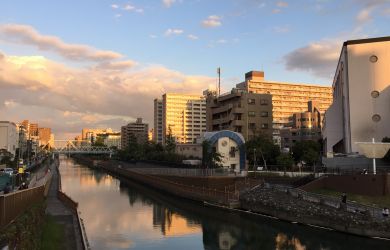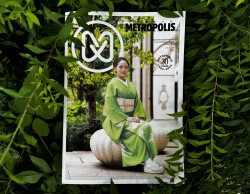
Originally published on metropolis.co.jp on December 2009
Courtesy of Galerie G.-P.&N. Vallois, Paris, France” width=”650″ height=”439″ class=”size-full wp-image-2787″ />
Gilles Barbier, The Nursing Home, 2002, six wax figures, television, various elements, dimensions vary
Courtesy of Galerie G.-P.&N. Vallois, Paris, France
Just in time for Xmas, the curators of Roppongi’s Mori Art Museum have decided to cheer us up. Their latest show, “Medicine and Art,” presents us with the following: a cross section of a real human being, sliced as thin as a piece of bacon and preserved between two plates of glass; a series of large photos showing people (including a baby) shortly before they died of terminal illnesses, and just after; and a real human skull grated into fine powder on seven meters of sandpaper-coated board.
Courtesy of Walter Schels” width=”310″ height=”152″ class=”size-full wp-image-2790″ />
Walter Schels, Life before Death—Elmira Sang Bastian, 14th January 2004 / 23rd March 2004, photography, 100 x 100cm each
Courtesy of Walter Schels
You can also see a range of prosthetic limbs, graphic anatomical models and illustrations (including some drawings by Leonardo da Vinci, no less), and a selection of antique medical devices that resemble medieval torture instruments. Heartwarming stuff in the run-up to Christmas—if you’re Hannibal Lecter!
For the rest of us, this exhibition, mainly sourced from London’s Wellcome Collection (originally the private “cabinet of curiosities” of a pharmaceutical millionaire), makes grim viewing. Yet it’s only fair to say that there are moments of humor, beauty and wonder. Korean artist Byung Ho Lee’s Vanitas Bust (2009), for example, ticks all three boxes. Looking like a marble sculpture of a young woman’s head, it is actually made of silicone with an air compressor hidden inside that suddenly transforms the smooth young features into those of a withered old crone.
As with this work, the exhibition performs one of the vital functions of art—making us take a fresh look at things. But most of the items on display are not quite in this category, with a preponderance of mundane medical bric-a-brac. The glass eyes, false limbs, hacksaws and medicine boxes may be of interest to the student of medical history, but don’t quite cut it as art.
Something similar can also be said about the works of the main contemporary “artist” in the collection, former animal pickler Damien Hirst, who supplies a medicine cabinet he didn’t make and a painting he didn’t paint, but which, by some miracle of modern art branding, both bear his name.
©2009 Her Majesty Queen Elizabeth II” width=”310″ height=”437″ class=”size-full wp-image-2797″ />
Leonardo da Vinci, Two Studies of a Cranium, 1489, pen and ink over traces of black chalk, 18.8 x 13.4cm
©2009 Her Majesty Queen Elizabeth II
More interesting than Hirst’s deadpan offerings are Miwa Yanagi’s striking diptych The Three Fates (2008); Patricia Piccinini’s cheeky Game Boys Advanced (2002); and Gilles Barbier’s The Nursing Home (2002), a large installation, which, with a typical touch of Gallic anti-Americanism, presents a selection of US comic book superheroes in enfeebled retirement.
Along with Lee’s Vanitas Bust, these works all comment on aging, which emerges as the dominant medical theme of the exhibition (although other aspects like genetics and contagion are also fleetingly raised). The topic of growing old will certainly be the one picked up by a Japanese audience, increasingly concerned with the problem of an aging society. This brings us to the main flaw of “Medicine and Art”: the way it encourages us to look inwards rather than outwards.
In the past, European paintings often featured skulls and other signs of impending mortality as a memento mori, a Latin phrase meaning “remember you die.” This was done in order to stimulate a spiritual and transcendent attitude in the viewer, who was taught to regard the life of the flesh as a state of lesser importance. But with religion now demoted by our modern materialistic culture and medical science having made enormous strides, the memento mori at the Mori now push us to egoistically obsess about our health, fantasize about prolonging our lives, and consider ways of dealing with our future feebleness—in other words, to focus more on our own ugly bone and gristle than the beauty that surrounds us.
Mori Art Museum
Medicine and Art: Imagining a Future for Life and Love. Various media. Until Feb 28, ¥500 (MS and under)/¥1,000 (HS, univ)/¥1,500 (adult). 53F Mori Tower Roppongi Hills, 6-10-1 Roppongi, Minato-ku. Tel: 03-5777-8600. Open Wed-Mon 10am-10pm, Tue 10am-5pm. Nearest stn: Roppongi. www.mori.art.museum/eng







